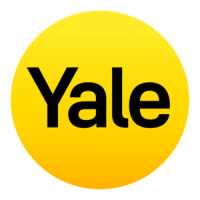Yale Electric Chain Hoist - CPV/F
®
8
5. FUNCTIONAL CHECK AFTER ASSEMBLY
Prior to initial operation of the hoist, grease the trolley pinions
(manual, geared and electric trolleys) and lubricate the load
chain when it is not under load (see page 8).
Before the hoist is put into regular service, the following
additional inspections must be made:
• Are all screwed connections on hoist and trolley tight and
are all locking devices in place and secure?
• Are the end stops on the trolley runway in place and secure?
• Is the chain drive correctly reeved?
• Is the chain end drive correctly reeved?
• Is the chain end stop correctly fitted to the loose end of the
load chain (see Fig. 1 - chain end stop)?
• Have all units, equipped with two or more chain falls,
been inspected before initial operation for twisted or kinked
chains? (The chains of 2-fall hoists may become twisted if
the bottom block is rolled over.)
• Has the function of the limit switch been checked? This
should be done by running the buffers of the chain end stop
bottom block against the limit switch underneath the
housing. The lifting/lowering operation must be stopped if
the limit does not function.
• Has the brake function when lifting/lowering been checked?
• Have the beam end stops been positioned correctly and
securely? Traverse the trolley (if available) the complete
length of the trolley runway ensuring that the 2-4mm lateral
clearance between the trolley wheel flange and the beam
outer edge is maintained at all times.
• Has the chain collector been correctly fitted and does the
chain enter and exit the collector freely? Ensure that the
chain does not pile up in the centre of the collector.
6. COMMISSIONING
Inspection before initial operation
Each hoist / trolley must be inspected prior to initial operation
by a competent person. The inspection is visual and functional.
Inspections must ensure that the hoist is safe and has not been
damaged by incorrect transport, storage or installation.
Inspections should be made by a representative of the
manufacturer or the supplier although the user can assign its
own suitably trained personnel. Inspections are instigated
by the user and controlled via the Lifting Operations & Lifting
Equipment Regulations (L.O.L.E.R).
Inspection by a crane expert
If the hoist is used as a crane, it has to be inspected and
approved by a crane expert before initial operation. This
inspection has to be registered in the crane inspection book.
The inspection by the crane expert has to be instigated by the
user and controlled via L.O.L.E.R.
7. OPERATION
Installation, service, operation
Users delegated to install, service or independently operate the
hoist must have had suitable training and be competent.
Users are to be specifically nominated by the company and
must be familiar with all relevant safety regulations.
Inspection before starting work
Before starting work, inspect the hoist, trolley, chains and all load
bearing components every time for visual defects. Furthermore,
test the brake and make sure that the load and hoist / trolley
are correctly attached by carrying out a short work cycle of
lifting, lowering and travelling in both directions. Selection
and calculation of the proper suspension point and beam
construction are the responsibility of the user.
Installation of load chain
Inspect the chain for sufficient lubrication and visually check for
external defects, deformations, superficial cracks, wear or signs
of corrosion.
Chain lubrication (see 8.2)
It is the responsibility of the user or the installer to ensure that
the load chain is correctly and adequately lubricated before
commencing operation.
Inspection of chain end stop
The chain end stop must be connected to the free (idle) chain
strand (see Fig. 1 - chain end stop).
Inspection of chain reeving
All units with two or more chain falls should be inspected prior
to initial operation for twisted or kinked chains. The chains of 2
fall hoists may be twisted if the bottom block was rolled over
(Fig. 9). The load chain has to be installed according to
illustration (Fig. 14). Ensure that the welds on the chain links
face away from the load sheave.
Inspecting the load hook
Check the load hook for deformations, cracks, damages,
abrasion and signs of corrosion.
Inspect the traverse (for trolleys)
Inspect the traverse for correct assembly and visually check for
external defects, deformations, superficial cracks, wear or signs
of corrosion. Especially, make sure that the roll pins are properly
fitted to the centre traverse (Fig. 12).
Check adjustment of trolley width
On chain hoists with trolley (CPV/F-VTP/G/E) check that the
clearance between the trolley wheel flange and the beam outer
edge is equal on both sides and within the tolerances given (see
page 5, Fig. 12).
Enlarging the clearances, e.g. to enable the trolley to negotiate
tighter curves, is strictly forbidden.
Traversing the trolley
Plain trolleys:
Push the hoist or attached load.
Attention: Never pull on the pendant control cable. Suspended
loads may only be pushed.
Gear trolleys:
By operating the trolley hand chain.
Electric trolleys:
By operating the resp. button. For trolleys with two speeds:
The first stage of button depression activates the slow speed.
Further depression activates the fast speed. Use the slow speed
for short periods only. Consider the braking distance of the
trolley. Do not use the beam end stops as operational limit
devices.
Fig. 9 Fig. 10
t
t
Y
ale
CPV/F
®

